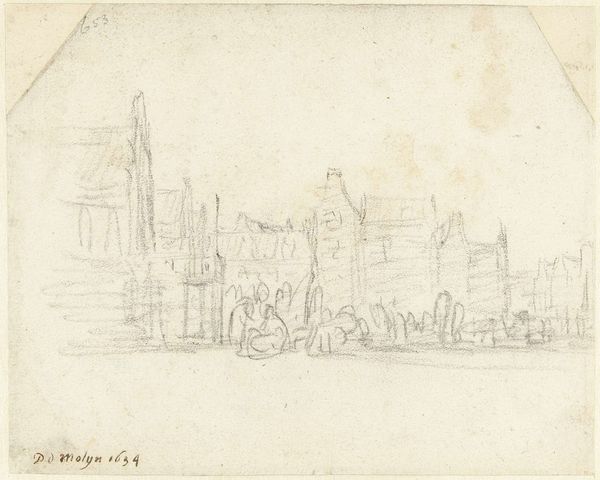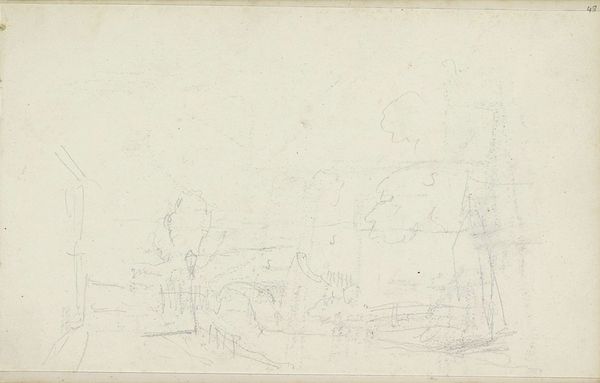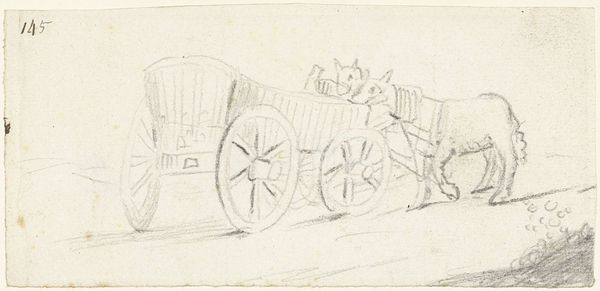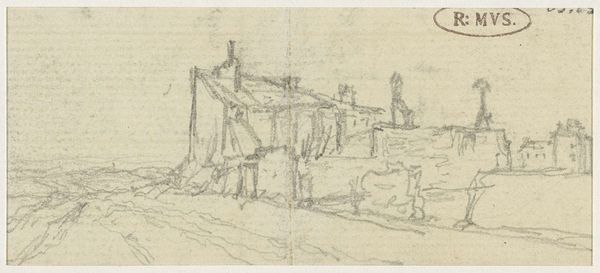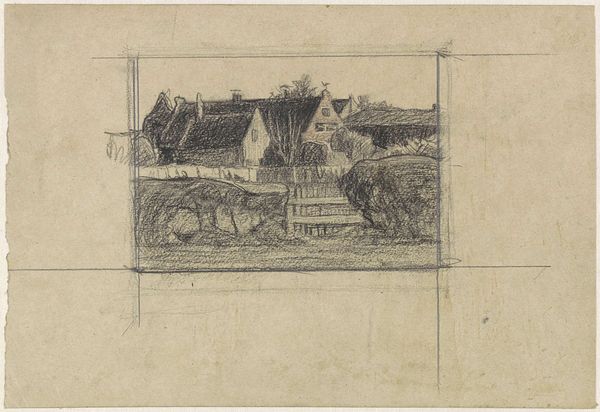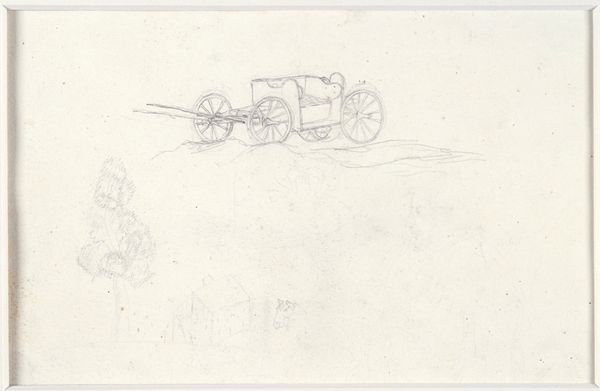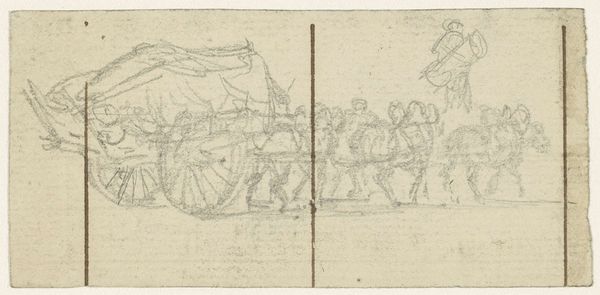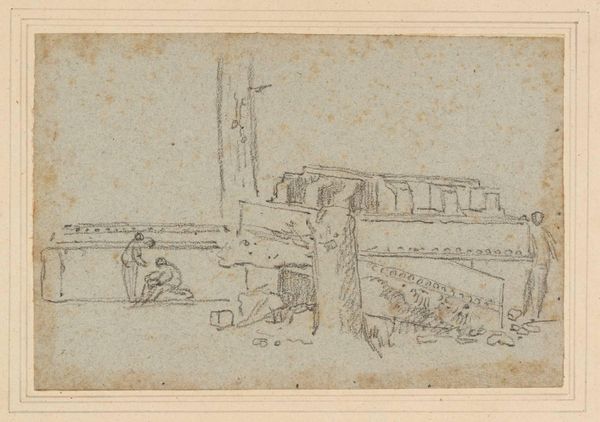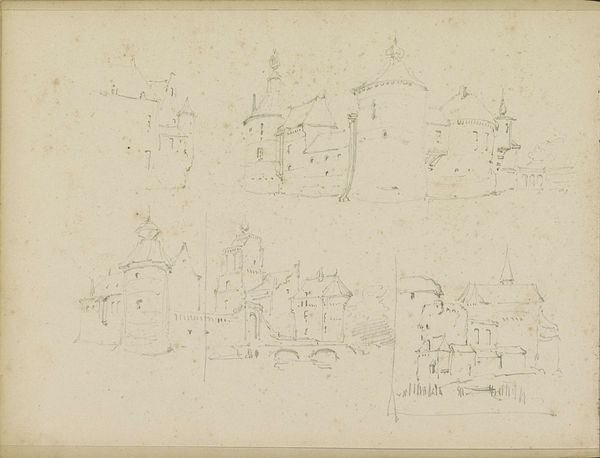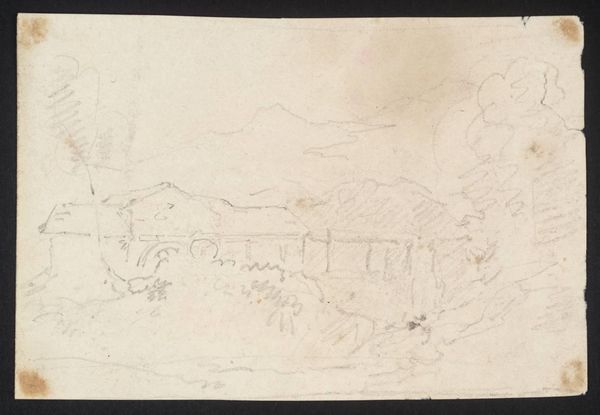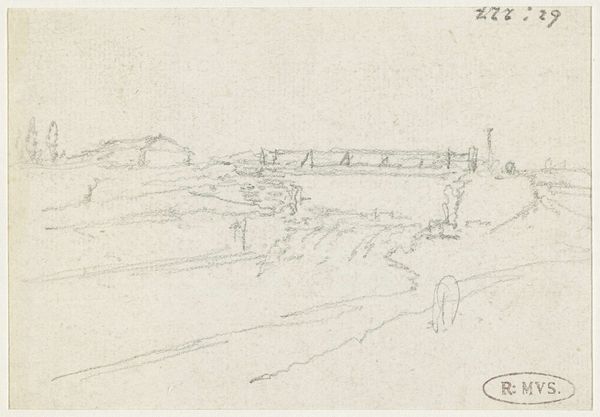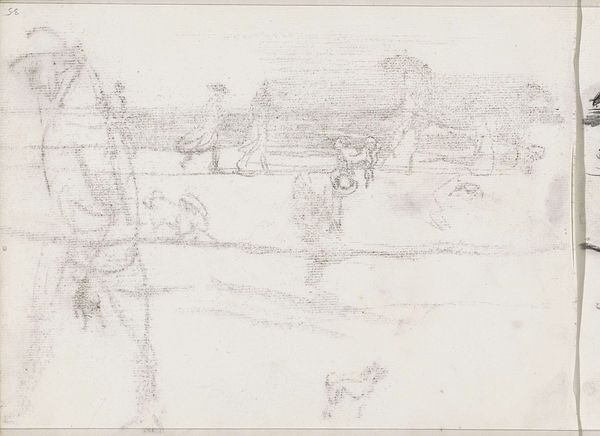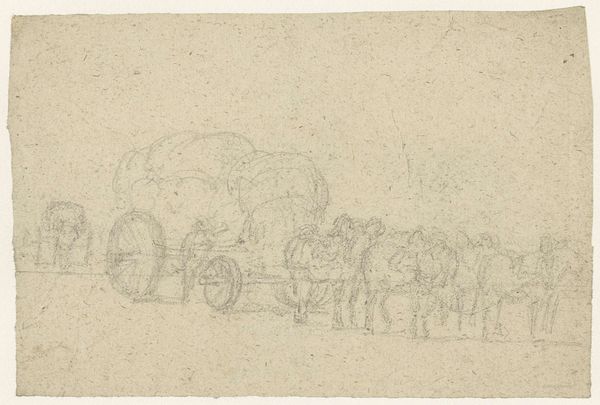
drawing, paper, pencil
#
drawing
#
landscape
#
paper
#
pencil
#
cityscape
#
genre-painting
#
realism
Dimensions: height 55 mm, width 115 mm
Copyright: Rijks Museum: Open Domain
Curator: Georges Michel rendered this cityscape, titled "Sleperskar in een straat," sometime between 1773 and 1843 using pencil on paper. Editor: It has an unfinished, dreamlike quality, doesn't it? All thin lines and ghosted impressions. Almost melancholic, really. Curator: That's largely due to the medium, pencil lends itself to such ephemerality. Note how Michel utilizes subtle shading to convey the weight of the buildings versus the movement implicit in the figures. Editor: It evokes the lives of everyday people. I’m immediately struck by the sheer ordinariness of it all, that cart suggests labor. Do we know the purpose of this drawing within his practice? Curator: Many think that these genre scenes were intended as preliminary studies. Michel used sketches like these as references for his paintings; it reflects his academic training, which relied on preparatory drawings. Editor: I’d hazard that the use of paper signifies both economic accessibility and social station. Paper being less expensive than canvas allowed the recording of many ordinary scenes across an area and signifies that these are ordinary scenes too. Curator: And what do you observe of Michel’s employment of the horizontal format? Consider how that elongation affects our reading of the city, or rather, what details of it he presents. Editor: The use of a wide and thin rectangle format mimics the layout of urban environments allowing him to showcase the depth of his perspective. More pointedly though is the effect that format would have on its original patron, enabling the intimate scene to be easily stored as part of their wider collection. Curator: One may observe Michel’s formalistic and intentional framing which serves the viewer, a certain emphasis is thus afforded to that wagon and it suggests narrative engagement. Editor: Narrative is interesting. Michel makes present, without judgement or fanfare, these urban lives. In short it presents an urban, mundane, perspective in keeping with the wider trend in popular consumerism of the 17th Century Curator: An assessment steeped in historical precedent. It is a compelling argument. It offers insight on form and function Editor: And, the synthesis, an intersection of both I think lends nuance and accessibility to understanding and appreciation.
Comments
No comments
Be the first to comment and join the conversation on the ultimate creative platform.
